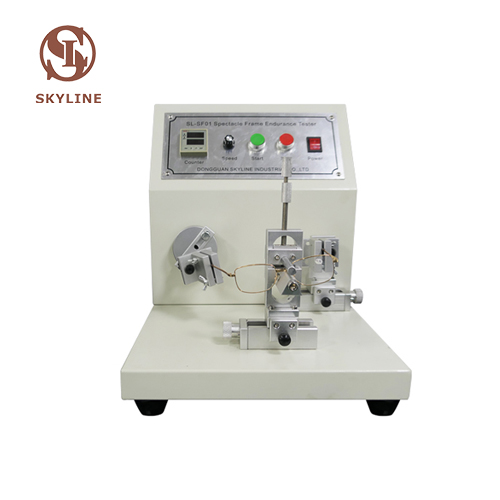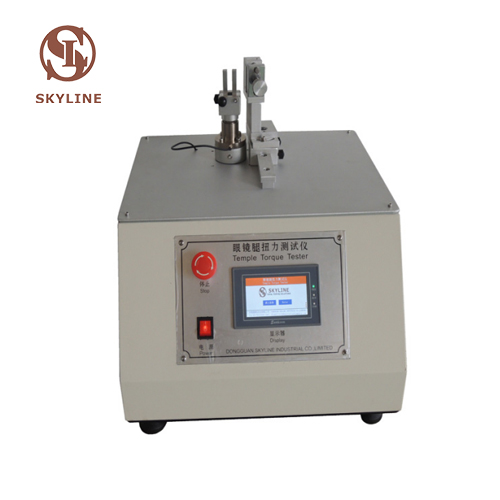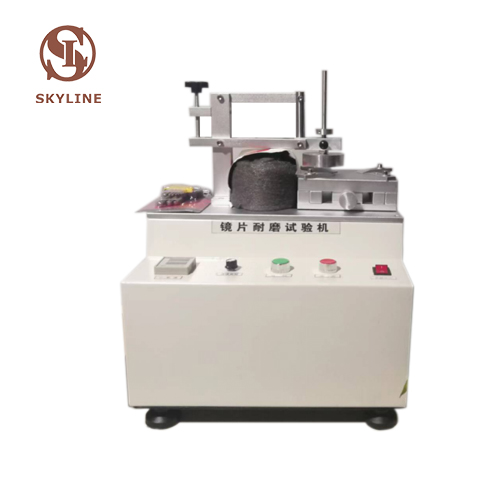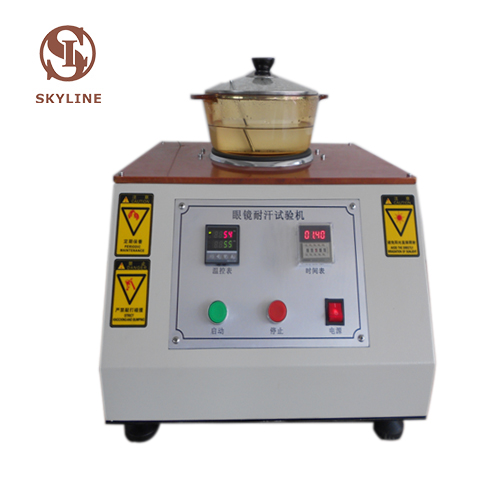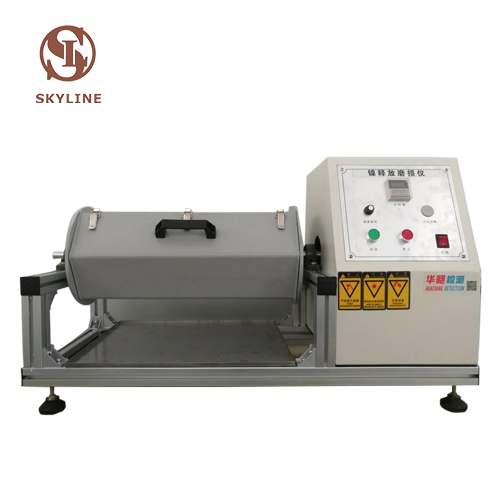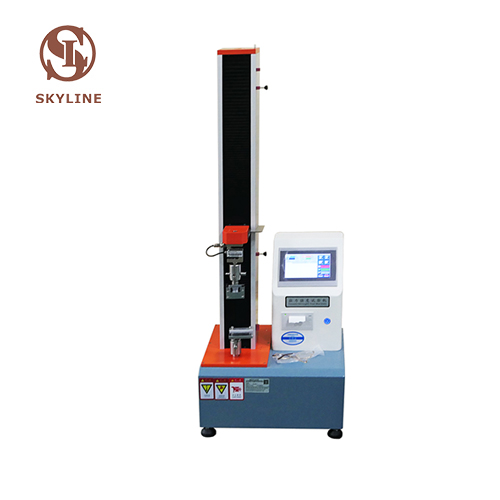How to ensuring Durability and Reliability of Spectacle Frames
Publish Time: Author: SkyLine Editor
The purpose of the spectacle frame endurance tester is to evaluate the mechanical endurance of spectacle frames under simulated conditions that mimic the wear and tear experienced during normal use. This test method assesses the ability of spectacle frames to withstand repeated mechanical stresses, such as bending, twisting, and flexing, without failure or deformation. The results of the test are used to determine the durability and reliability of spectacle frames and ensure that they meet the requirements of ISO 12870.
Spectacle frames are an essential part of eyewear, providing comfort, stability, and aesthetics to the wearer. Spectacle frame endurance testing is crucial in ensuring the durability and reliability of these frames, as they are subjected to various mechanical stresses during normal use. The ISO 12870 standard, titled "Ophthalmic Optics - Spectacle Frames - Endurance Requirements and Test Methods," provides guidelines for testing the endurance of spectacle frames. In this article, we will explore the details of the spectacle frame endurance tester as per ISO 12870, including its purpose, procedures, and significance in evaluating the quality of spectacle frames.
Purpose of the Spectacle Frame Endurance Tester:
The purpose of the spectacle frame endurance tester is to evaluate the mechanical endurance of spectacle frames under simulated conditions that mimic the wear and tear experienced during normal use. This test method assesses the ability of spectacle frames to withstand repeated mechanical stresses, such as bending, twisting, and flexing, without failure or deformation. The results of the test are used to determine the durability and reliability of spectacle frames and ensure that they meet the requirements of ISO 12870.
Procedures of the Spectacle Frame Endurance Tester:
The spectacle frame endurance tester follows specific procedures as outlined in ISO 12870. The key steps in the test include:
Specimen Preparation: Spectacle frame specimens are selected according to the specifications provided in ISO 12870. The specimens typically represent different styles, materials, and designs of spectacle frames, and may include full-rim, semi-rimless, and rimless frames made of metal, plastic, or other materials. The specimens are prepared by attaching appropriate lenses and temple tips, and adjusting them to the standard fitting position.
Test Setup: The prepared spectacle frame specimens are mounted onto the spectacle frame endurance tester, which is equipped with mechanical devices that simulate the mechanical stresses experienced during normal use. The tester applies controlled mechanical stresses to the frames, such as bending, twisting, and flexing, in a repetitive manner to simulate the wear and tear over time.
Test Execution: The spectacle frame endurance tester applies the specified mechanical stresses to the frames for a specified number of cycles, as per the requirements of ISO 12870. The number of cycles varies depending on the type of frame and the intended use, and may range from hundreds to thousands of cycles. The frames are visually inspected after each cycle for any signs of failure or deformation, such as cracks, fractures, or changes in shape.
Performance Evaluation: After the specified number of cycles, the spectacle frame specimens are evaluated for various performance criteria, such as the absence of visible damage, proper alignment of lenses and temple tips, and functional integrity of the frames. The performance of the specimens is compared to the requirements of ISO 12870, and a pass or fail determination is made based on the ability of the frames to meet the criteria.
Significance of the Spectacle Frame Endurance Tester:
The spectacle frame endurance tester as per ISO 12870 is a critical tool in evaluating the quality and reliability of spectacle frames. It has several significant implications, including:
Consumer Safety: Spectacle frames that fail to meet the requirements of ISO 12870 may pose a risk to the safety and comfort of the wearer. Frames that deform, crack, or fracture during normal use may cause discomfort, impair vision, or even result in injury. The spectacle frame endurance tester helps ensure that frames are durable and reliable, providing consumer safety and satisfaction.
Quality Assurance: Spectacle frame manufacturers use the spectacle frame endurance tester as a quality assurance tool to assess the performance of their products. By testing

